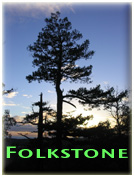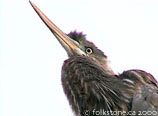
Health: Disease: H5N1 Avian influenza (Bird Flu)
Collaborative Approaches
Fluwiki
"The purpose of the Flu Wiki is to help local communities prepare for
and perhaps cope with a possible influenza pandemic. This is a task previously
ceded to local, state and national governmental public health agencies. …
No one, in any health department or government agency, knows all the things
needed to cope with an influenza pandemic. But it is likely someone knows
something about some aspect of each of them and if we can pool and share our
knowledge we can advance preparation for and the ability to cope with events.
This is not meant to be a substitute for planning, preparation and implementation
by civil authorities, but a parallel effort that complements, supports and extends
those efforts."
Effect Measure
"Effective measure is a forum for progressive public health discussion and argument as
well as a source of public health informaiton from around the web that interest the editors. …
An effect measure is an estimate of the influence of a particular factor on a population's health.
The Editors of Effect Measure are senior public health scientists and practitioners. "
Research
Commentary
Pandemic Planning Checklist for Small Businesses
Scientific American: Perparing for a Pandemic
Nature: Wartime tactic doubles power of scarce bird-flu drug "…Howton noticed from Roche's data that Tamiflu, like penicillin, is actively secreted by the kidneys, and that the process is inhibited by probenecid. Giving the flu drug together with probenecid doubles the time that Tamiflu's active ingredient stays in the blood, doubles its maximum blood concentration, and multiplies 2.5-fold the patient's total exposure to the drug."
WorldChanging: Bird-flu: Can We Out-Collaborate A Pandemic? "…So, is it time to take to the basement safe room and start eating canned beans? Not quite. There is still a good chance that we can avert the next plague by working together. If so, the blogosphere will need to play a key role."
Plans
US Planning & Response Activities
"The official U.S. government Web site for information on pandemic flu and avian influenza."
World Health Organization: WHO global influenza preparedness plan
"The role of WHO and recommendations for national measures before and during pandemics"
References
CBC News Indepth: Avian Flu
A good non-technical overview.
BC Centre For Desease Control: H5N1
BCCDC provides current Risk Accessment, Frequently Ask Questions,
Situation Updates from around the world for both human and animal populations as well
as Travel Advisories and Alerts for Health Care Professionals and breaking news regarding H5N1.
Center for Infectious Disease Research & Policy: Avian Influenza
CIDRAP provides an excellent reference identifing breaking news, ordered by date, as well as referencing more substancial material as it becomes available.
The World Health Organization:
H5N1
Frequently Ask Questions
"WHO is the United Nations specialized agency for health.
It was established on 7 April 1948. WHO's objective, as set out in its Constitution,
is the attainment by all peoples of the highest possible level of health. Health is
defined in WHO's Constitution as a state of complete physical, mental and social
well-being and not merely the absence of disease or infirmity."
Centers for Disease Control and Prevention
CDC identifies Influenza A (H5N1) as a subtype of type A influenza viruses. "Wild birds are the
natural hosts of the virus Ð hence, the name avian influenza or bird flu.
The H5N1 subtype was first isolated from birds (terns) in South Africa in 1961.
Infected birds shed virus in their saliva, nasal secretions, and feces.
Avian influenza viruses spread among susceptible birds when they have contact with contaminated excretions.
The virus circulates among birds worldwide and is very contagious, but causes minimal disease in wild birds.
In contrast, H5N1 viruses have recently begun to cause severe and fatal disease among domesticated birds, such as chickens."
"The Centers for Disease Control and Prevention (CDC) is one of the
13 major operating components of the Department of Health and Human
Services (HHS), which is the principal agency in the United States
government for protecting the health and safety of all Americans and
for providing essential human services, especially for those people
who are least able to help themselves."
Public Health Agency of Canada: H5N1
"The avian flu virus does not spread easily or rapidly among humans.
However, flu viruses have the capacity to mingle with one another and morph into a new strain.
This is one of the reasons that health officials keep such a close watch on outbreaks of avian flu.
If someone with human influenza also becomes infected with avian influenza,
there is a chance that the viruses could mingle and turn into a new virus that spreads easily from person to person.
This could lead to a worldwide epidemic (or pandemic) of influenza. No one would have immunity to the new virus,
and it would take four to six months to develop a new vaccine."
World Organization For Animal Health
OIE posts updates related to confirmed avian influenza in animals.
Novel: Catching Cold: The Hunt for a killer virus
"Pete Davies had written a splendid account the Spanish flu virus that wiped out millions globally in 1918.
The briefing on bird flu in 1997 served as timely broach into the subject. The rest of the book described
the terrifying story of a plague from our recent past. It focused on a small group of scientists trying to
trace, dig up, and therefore understand the 1918 virus. The book is splendidly written that you can read it as a thriller."
This book is written as a novel but deals with the very real issues of H5N1 out break in Hong Kong in 1997,
spanish flue in 1918 and the search to understand what happened. Given that gene sequencing has related the
spanish flu to H5N1 this book is an easy why get background on this issue.
Wikipedia: H5N1
"H5N1is a highly pathogenic strain of
avian influenza
(bird flu). The first known appearance of this type of influenza
in humans was in Hong Kong during 1997.
The infection of humans coincided with an epidemic of avian influenza, caused by the same strain, in Hong Kong's poultry population. The name H5N1 refers to the subtypes of surface
antigens present on the virus:
hemagglutinin type 5 and
neuraminidase type 1."
Roche: Tamiflu: oseltamivir phosphate
"Roche makes Tamiflu or oseltamivir phosphate by processing a plant extract from China in a process that takes 12 months from harvesting to finished product."
globe and mail
FDA: Tamiflu: oseltamivir phosphate
"In response to the emerging threat of pandemic (Avian) influenza, the Food and Drug Administration (FDA) today
announced the formation of a Rapid Response Team to ensure that antiviral drugs are available to the American people,
in the event they are needed. While there is no current flu pandemic, the team will help ensure an adequate supply of
treatments, such as oseltamivir phosphate (Tamiflu) and other anti-influenza drugs, for stockpiling in the event there
is an outbreak in the United States."
Health Canada: Tamiflu: oseltamivir phosphate
Mouse Study: Duration and Dosage of Oseltamivir (2005)
"Virulence may determine the necessary duration and dosage of oseltamivir treatment for highly pathogenic A/Vietnam/1203/04 influenza virus in mice."
Mouse Study: Effectiveness of Oseltamivir Phosphate (2000)
"The neuraminidase inhibitor GS4104 (oseltamivir phosphate) is efficacious against A/Hong Kong/156/97 (H5N1) and A/Hong Kong/1074/99 (H9N2) influenza viruses."
MDH: Immunization
"Each year, a new vaccine is created to protect people against currently circulating
influenza viruses, i.e. during non-pandemic years. Although this vaccine will not
directly protect you from the potentially pandemic causing H5N1 strain, it is still
important to receive annual influenza vaccination. By protecting yourself from seasonal
influenza, you can reduce the potential of co-infection with a novel influenza strain such as H5N1.
If someone were infected with both seasonal influenza and H5N1, for example, genetic reassortment
of the genes of both strains could create an even more dangerous bug."
MDH: Prevention
"Basic but important strategies to protect yourself from contagious diseases such as influenza, including washing your
hands, staying home if you are sick, and getting a pneumococcal shot if appropriate."
How To Treat Flu
"Fall and winter are the viruses' delight. Rhinoviruses (colds) and adenoviruses (flus) prey on people
huddled close together in cold weather. They also feel right at home on thousands of daily continental and
intercontinental flights on which they fly for free. The vast oceans on the earth host uncounted viral hoards,
and global warming makes breeding and mutations easier. Adenovirus transmission often goes from wild birds or
bats to chickens, then pigs, and finally to humans."
Nature: The 1918 flu virus is resurrected |
BBC Commentary |
Pravda Commentary
"It is thought to have killed 50 million people, and yet scientists have brought it back to life.
In this issue of Nature, scientists publish an analysis of the full genome sequence of the 1918
human influenza virus. And in this week's Science, researchers describe how they used that sequence
to recreate the virus and study its effects in mice.
The full sequence is strong evidence that the 1918 flu virus is derived wholly from an ancestor
that originally infected birds. In contrast, the viruses that caused the flu pandemics of 1957 and
1968 arose when human and avian flu viruses infected the same person at the same time, allowing their genes to mix."
